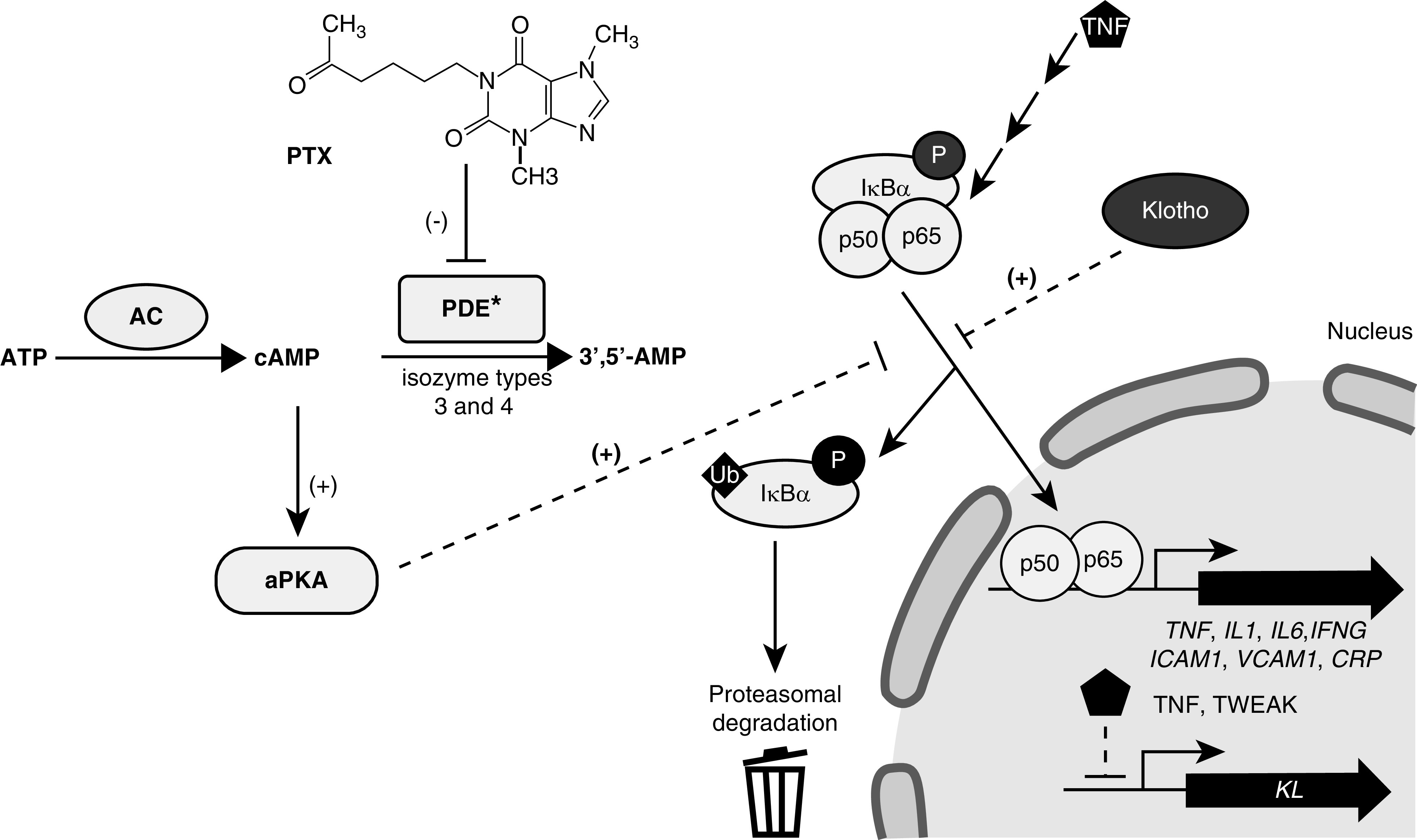Figure 1.

Pentoxifylline inhibits phosphodiesterase activity, increasing cAMP levels that activate protein kinase A. Active protein kinase A (aPKA) would inhibit ubiquitination that drives inhibitor of κ B α (IκBα) to 26S proteasome degradation and p50/p65 activation of the expression of cytokines and other genes. Decreased levels of TNF-α (TNF) and TNF-related weak inducer of apoptosis (TWEAK) increases Klotho (KL) expression, whereas KL inhibits the production of proinflammatory cytokines and TNF-induced adhesion molecules. AC, adenylate cyclase; CRP, C-reactive protein; ICAM1, intercellular adhesion molecule 1; IFNG, IFN-γ; P, phosphorylation; p50, NF-κB p50 subunit (NF-κ-light-chain-enhancer of activated B cells 1); p65, NF-κB p65 subunit (RelA; v-rel avian reticuloendotheliosis viral oncogene homolog A); PTX, pentoxifylline; VCAM1, vascular cell adhesion molecule 1. Reprinted from reference 43 (Donate-Correa J, Tagua VG, Ferri C, Martín-Núñz E, Hernández- Carballo C, Ureña-Torres P, Ruiz-Ortega M, Ortiz A, Mora-Fernández C, Navarro-González JF: Pentoxifylline for renal protection in diabetic kidney disease. A model of old drugs for new horizons. J Clin Med 8: E287, 2019), which is available under the terms of the Creative Commons Attribution License.
